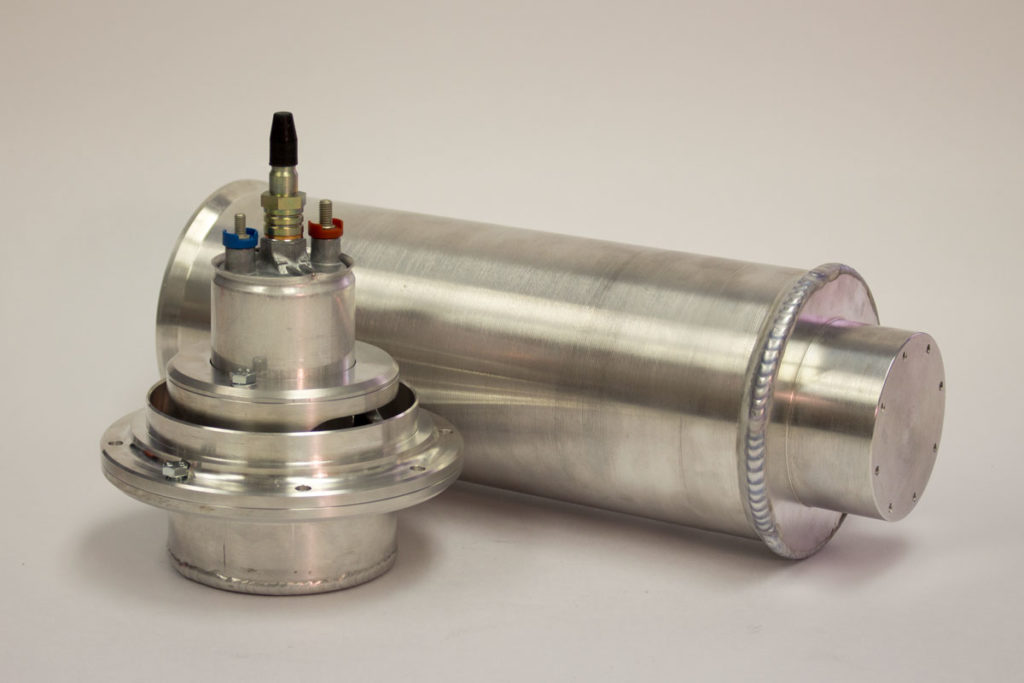At Redstone we often encounter projects that require parts that you cannot simply buy and install, they have to be designed and fabricated. This is the case for many of the components involved in the engineering of the Porsche 962, including the fuel can.
The Fuel Can is an essential part of the fuel delivery system on the 962. Liquids in the car are affected by the fast acceleration, hard braking and lateral acceleration suffered while cornering. This presents a challenge both for the lubrication and the fuel delivery system. In this case the Fuel Can provides a solution. By having the Fuel Can filled at all times within the fuel tank, we ensure that the engine will always get the fuel it needs regardless of where the fuel is in the tank. When there is not enough fuel to fill the can the engine will shut off as a fail-safe method.
This solution is nothing new. The challenge is applying it to our scenario. We had the tank and the fuel pump we were going to use, and we knew that our Fuel Can needed to hold at least 1 gallon at all times.
From the start there where a couple challenges. To get a gallon of capacity in the Fuel Can it needed to grow in height and diameter. The Fuel Can couldn’t be too tall because of the shape of our tank and it couldn’t be too wide because of the lower opening. After coming up with a size that would work, we just needed to figure out how to put the fuel pump inside the Fuel Can, and attach the Fuel Can to the fuel tank.
The solution was to separate the lower section of the can from the middle and the Fuel Can itself could be separated from the upper lid. This design makes it easy to hold and attach everything together.
Designing a Fuel Can to work this way involved a lot of circular patterns. We didn’t want to overcomplicate anything, so we decided on welding parts together rather than machining everything. We also had to be careful choosing our fasteners because of size limitations.
The final challenge was figuring out how to hold the fuel pump. The fuel pump did not have any elements for attachment and it also needed to be at the bottom of our Fuel Can. After looking at the fuel pump we realized we could use a pre-existing lip to pinch it in place. We made the lower part of the can a two-piece component where the fuel pump would sit and then a ring to keep it in place with the help of two bolts. The lower part of the can also had a straight slot cut into it that allows the fuel to come into the lower part of the can.
After making the necessary drawings, getting the material, performing the machining and some welding, our part was finally finished and ready to be fitted.
C.Ramos – Design Engineer
